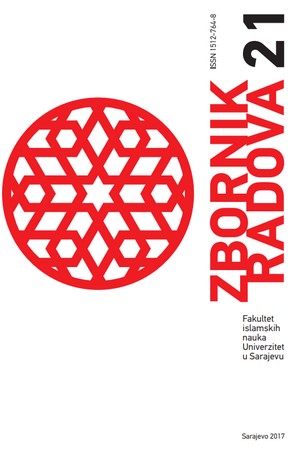VAŽNA NAČELA TEDŽVIDSKE PRIMJENE U HAFSOVOM RIVAJETU
MAJOR PRINCIPLES IN APPLYING TAJWĪD ACCORDING TO THE RIWĀYA OF ḤAFṢ
Author(s): Dževad ŠošićSubject(s): Theoretical Linguistics, Islam studies, Phonetics / Phonology, Syntax, Methodology and research technology
Published by: Fakultet islamskih nauka u Sarajevu
Keywords: Qur’an; tajwīd; riwāya; Ḥafṣ; length; tashīl; rawm; hamza; sakta; ishmām; tanwīn; pausal form;
Summary/Abstract: The science of tajwīd is not receptive of theoretical elaboration or the application of innovative research methods, given that the principles and rules of Qurʼanic recitation are clearly fixed and standardized, in accordance with authentic and unbroken traditions that go back to the Prophet, p.b.u.h. The main goal of tajwīd is to preserve tilāwa interpretations of the Qurʼanic text from when it was revealed. The theory of tajwīd and tajwīd rules have served that goal for centuries. The methodological aspect of tajwīd, which is concerned with the practical implementation of tajwīd rules, has allowed for certain degree of modification, adaptation and improvement, however, in line with the needs of times and historical circumstances. A common question this give rise to is how best to explain the practical application of tajwīd rules, given the different ages, background knowledge, ethnic, cultural and linguistic characteristics of those receiving a Qurʼanic education. Numerous tajwīd books, textbooks and manuals have been written in response to these questions, especially in Arabic. This article offers a concise synthesis of the important principles in practical application of certain of the rules of tajwīd. Such practical application reflects the quality of qirāʼa interpretation of the Qurʼanic text, as well as the degree to which a recitation may be described as correct or wrong, elementary or advanced, average or artistic.
Journal: Zbornik radova Fakulteta islamskih nauka u Sarajevu
- Issue Year: 2017
- Issue No: 21
- Page Range: 51-63
- Page Count: 13
- Language: Bosnian

